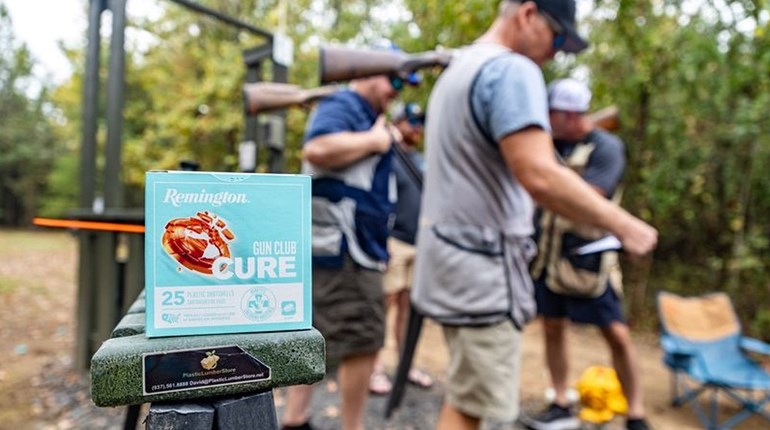
Based on the empirical evidence in my part of the world, global warming is a myth. Some of the Northeast's most severe winters in recent memory have occurred in this millennium. If anything, we are getting colder. The air stays bitter cold for months on end, while the snow comes early, piles high and stays late. So when an opportunity came along to spend a week in late March hunting coyotes in Texas, I jumped on it, if not for the hunting, then at least to have a few snow-free days basking in the warmth and sunshine. That my family would be back home watching me on Fox News a few days later was not part of the plan.
The helicopter shot showed cars lined up on the highway as far as the eye could see as a freak snowstorm swept through north Texas and everything ground to a halt. I was in one of the stalled vehicles that filled the open highway for miles, talking on my cell phone to my wife and waving out the window to see if she could spot our rental van. It turns out there were hundreds of other stuck travelers on their cell phones doing the same thing, so with all the arms waving in the air it looked like a rock concert tribute.
We hunted in two locations, one at the base of the Texas Panhandle and the other in East Texas; in fact, we were en route between the two when the snowstorm grounded us and we had to seek refuge in a hotel.
Several days of high winds preceded the storm and served to keep our success rates low in the first half of the hunt. I at least had an assist on one coyote that holds significant historical record. We were in the open, red-dirt desert of the lower panhandle. I was paired up with Ed Schoppman from EOTech sights and we made our first stand in a low creek bed that was slightly sheltered from the wind by high bluffs. We crept in quietly with the wind in our faces, got our rifles into position and I started to call.
About two minutes later a big male coyote stood up from the bush it was bedded in and started to us on a trot. The coyote ran the first 100 yards, then slowed and starting looking over the situation. My guess is it had been called before and was being cautious. Clearly, it wasn't seeing anything it liked and it turned to leave. When it paused to look back from some high ground about 50 yards out, Ed dumped it in its tracks. This was a significant event because, as far as I can figure, that was the first coyote ever shot with the new Remington R-15 rifle.
When Remington decided to market one of the world's most popular fighting rifles to the hunting world, it created a quantum shift in the industry. For many years the AR-15 has had a small, but loyal, following among hunters. This is particularly true with serious predator and varmint hunters; however, it could never gain enough traction to gain acceptance with mainstream hunters. Much of that is because of the stigma that has been plastered on "black rifles" by the media and Hollywood. Most hunters who would "never hunt with one of those rifles" would have no problem with a "normal looking" .223 semi-auto rifle. The prejudice was against the cosmetics rather than the function, but the bias held back the success of AR-style rifles in the hunting fields. This was slowly changing as hunters discovered the advantages of the AR-15 rifles, but the pace was glacial.
Then an investment company, Cerberus Capital Management, entered the picture. Cerberus is a huge company with international holdings in just about every aspect of industry. It is run by a guy with an interest in hunting, which influenced his business. In June of 2006 Cerberus bought Bushmaster, the industry volume leader in AR-15 rifles. Less than a year later, in April of 2007, Cerberus bought Remington and they followed in December with the purchase of DPMS, another major player in the AR-15 market.
It didn't take long to meld the world of Remington hunting rifles with the black gun design. The Bushmaster-produced Remington R-15 was the first rifle introduced- shown officially to the world at the 2008 SHOT Show. The DPMS-produced R-25, which is chambered in .308-size cartridges, followed just a few months later. DPMS would also later make the Remington R-15 in the new .30 Remington AR. This was introduced at the 2009 SHOT Show, but at this writing in November it is not yet in production.
With the bully pulpit that Remington commands, the level of acceptance for AR-15 rifles among hunters escalated. Within a year, the AR-type rifle gained more mainstream acceptance and use in the field than it probably had in the previous two decades. Big Green carries a big stick and it wielded it to show the hunting world that black guns are fine for hunting.
The gun that started this mini-revolution, the R-15, was designed for one thing: predator hunting. We were the first hunters to put it to that test. So while that Texas predator hunt might have had its problems, it was still a bit historic.
The Remington R-15 rifle is an AR-15 designed for hunting. It is mostly covered with Advantage MAX-1 HD camouflage. The barrel lacks any adornment, such as a flash hider on the muzzle. There are two barrel lengths offered: 22-inch and 18-inch. When ordering my personal rifle I requested the longer barrel. This is a hunting gun and I wanted all the velocity I could get from the .223 Rem. cartridge.
The R-15 has a free-floating barrel, a knurled surface and an aluminum handguard or fore-end tube. This allows the barrel to be free-floating for enhanced accuracy. The fore-end tube is drilled and tapped for accessory rails, and many predator hunters will add one so they can install a flashlight for use in areas where night hunting is legal. The blued barrel has a .680-inch diameter at the muzzle and features six longitudinal flutes ahead of the gas block. This might well be described as a sporter-weight barrel for this type of rifle, helping to keep the weight down. The 22-inch rifle weighs 7.75 pounds, which is not lightweight, but is still very comfortable to carry while calling predators. The carbine version weighs in at a pound less. The carbine is also available with a collapsible buttstock. These stocks are designed for fighting guns so that the length of pull can be shortened when wearing body armor. While predator hunters do not often wear body armor, we do wear a lot of thick, bulky winter clothing.
My personal rifle will shoot most factory loads with an average of 1.5 inches for five-shot, 100-yard groups. For "out-of-the-box" accuracy this beats the average of the many sporter-weight hunting rifles I have tested and falls about in the middle for AR-15 style rifles I have tested.
The one common complaint heard about the R-15, and mine was no exception, is that the trigger is stiff. But the great thing about these rifles is there is a huge industry supplying aftermarket parts and accessories, including drop-in triggers. It took about 15 minutes to replace the rough trigger in my rifle with a Timney. It now has a crisp, 3-pound trigger pull.
The R-15's uppers and lowers are machined from aluminum forgings. The upper receiver has a rail on top to mount a scope or other optical sight. On this Texas hunt we used EOTech holographic sights. These are no-magnification sights that are fast and accurate for close-range shooting. But, by adding a 3X or 4X optical magnifier on the rear we had a magnified sight for longer shots. The magnifier is on a pivot mount so it can be instantly flipped out of the way to allow using the EOTech sight without magnification. This worked well when one coyote was hit, but managed to run off. We flipped our magnifiers out of the way as we followed up on the blood trail. I liked the optics so well that when I ordered my personal R-15 I set it up with the same sighting system that I used in Texas.




































